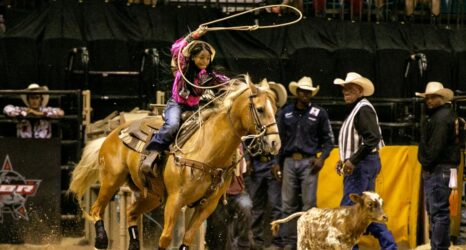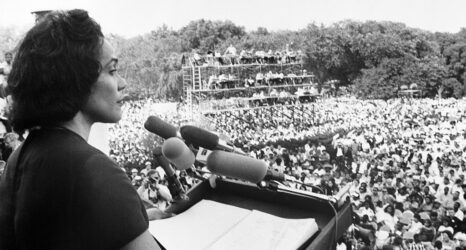Though many of those who worked for woman suffrage were content to end their careers as activists when the 19th Amendment was ratified in 1920, Daisy Lampkin just shifted gears and never slowed down. That’s because she saw “Votes for Women” as just one step toward achieving political, economic and social justice for all in a country which still openly practiced and legally sanctioned outrageous forms of bigotry.
Beginning as a homemaker concerned with consumers’ rights, she quickly realized that voteless women of all races would continue to be ignored as long as they lacked political power. So, in 1912, she began having suffrage meetings in her home. She even engaged in the new–and at the time quite bold–tactic of giving street-corner suffrage speeches. As a dedicated member of the Negro Women’s Equal Franchise Federation, she was elected its president in 1915, and headed the organization, which later became the Pittsburgh Lucy Stone League, for 40 years. Her work in Pittsburgh and surrounding Allegheny County must have had an effect, because even though the 1915 Pennsylvania Suffrage Referendum was defeated by more than 55,000 votes statewide, it passed in Allegheny County by a comfortable margin of just over 3,000.
Like those in many other states, Pennsylvania women finally won the vote in 1920 when the Susan B. Anthony (19th) Amendment became part of the U.S. Constitution. To Daisy Lampkin, that victory just meant she now had more time to work for racial equality. She helped organize the Pittsburgh NAACP, and when in the late 1920s it became somewhat apathetic, she re-energized it by personally directing a drive to recruit enthusiastic new members. The spectacular success of this campaign brought her to the attention of the national organization, which named her Regional Field Secretary in 1930 and National Field Secretary in 1935, a post she held until 1947.
She traveled around the country as Field Secretary, giving speeches, organizing chapters and promoting the NAACP’s anti-lynching campaign. She was as successful nationally as she had been locally, and in 1944 was honored by the National Council of Negro Women, a group she helped found, for leading the most successful membership drive in the NAACP’s history.
Another example of her recruitment skills occurred in 1938, when she encouraged a young attorney named Thurgood Marshall to come to New York and work for the NAACP. He eventually became their chief counsel, argued the landmark Brown v. Board of Education case before the Supreme Court in 1954 and in 1967 he became the first African American justice on the nation’s highest court.
Lampkin’s skills at fundraising were no less impressive than her ability to spot talent. In 1947 alone she raised more than a $1 million, equal to $10 million today.
After health problems caused her to retire as field secretary, she was named to the NAACP national board, the first woman and first former staff member to be named to that body. Though her title changed, her dedication remained the same, and she was always willing to go anywhere at any time she was needed. Her commitment to the cause of equality was such that even at the age of 81 she went off to work on a membership drive in Camden, N.J. It was there that she suffered a stroke, and died a few months later on March 10, 1965, after more than a half century of work on behalf of dignity and equality for all. She had seen the civil rights movement become a very powerful force that had already won some major victories, and must have known that more would be forthcoming.
A hundred years after she began her fight, the battle against racism, sexism and political, social and economic injustice still goes on. But America in 2012 is a much different place than it was in 1912, and Daisy Lampkin deserves recognition and thanks for helping bring about the progress that has been made.
Read More:





